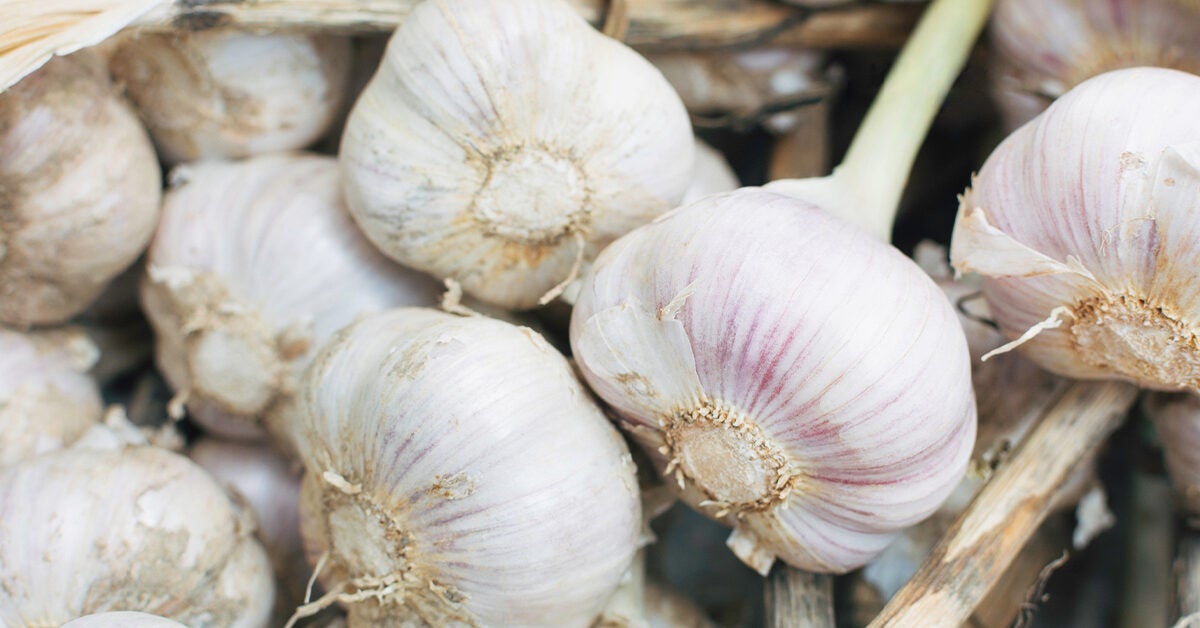Exploring the Benefits of Garlic Polysaccharides in Health and Wellness
Introduction
In the realm of natural compounds with potential health benefits, garlic has long held a prominent place. One of its lesser-known components, garlic polysaccharide, has been gaining attention for its various potential positive impacts on human health. While the term "garlic polysaccharide" might sound complex, its significance lies in its potential to enhance overall well-being and contribute to various aspects of health. In this article, we delve into the world of it, exploring their origins, properties, and potential benefits, while ensuring adherence to Google's indexing and ranking guidelines.
Understanding Garlic Polysaccharide
Polysaccharides, in general, are complex carbohydrates composed of multiple sugar units bonded together. it are a type of polysaccharide specifically found in garlic. These compounds are primarily responsible for some of the remarkable properties of garlic that have been appreciated for centuries. Garlic's pungent aroma and unique taste can be attributed to its sulfur-containing compounds, but the polysaccharides present in garlic also play a crucial role in its biological effects.
Properties and Composition
it are a diverse group of compounds, each with distinct properties and functions. They are often classified into water-soluble and water-insoluble polysaccharides. Water-soluble polysaccharides, such as fructans and β-glucans, have been linked to various health benefits due to their ability to interact with the human body's systems.
These polysaccharides are rich in functional groups, including hydroxyl groups and sulfur-containing moieties. These unique chemical characteristics contribute to garlic's potential health-enhancing effects. Additionally, it possess antioxidant properties, which can help combat oxidative stress and its associated negative impacts on health.
Potential Health Benefits
1. Immune System Support: it have been studied for their potential to modulate the immune system. Some research suggests that these compounds might enhance the activity of certain immune cells, supporting the body's defense mechanisms.
2. Gut Health: Water-soluble it are believed to have a positive influence on gut health. They may serve as prebiotics, promoting the growth of beneficial gut bacteria. This, in turn, can contribute to improved digestion and overall well-being.
3. Cardiovascular Health: Some studies have indicated that it could contribute to cardiovascular health. They might help regulate cholesterol levels, support healthy blood pressure, and promote the relaxation of blood vessels.
4. Antioxidant Effects: The antioxidant properties of it play a role in reducing oxidative stress and inflammation in the body. This could have implications for various chronic conditions associated with oxidative damage.
5. Diabetes Management: Emerging research suggests that it might have a positive impact on glucose metabolism. They could potentially contribute to more stable blood sugar levels.
6. Skin Health: The antioxidant and anti-inflammatory effects of it might also have applications in promoting skin health. These compounds could help protect the skin from damage caused by environmental factors.
7. Antimicrobial Properties: Garlic has been recognized for its antimicrobial properties for centuries. While not the primary source of this effect, it could contribute to the overall antimicrobial potential of garlic.
Conclusion
it represent an exciting avenue of exploration within the field of natural compounds with potential health benefits. Their diverse properties, including immune system support, potential cardiovascular benefits, and antioxidant effects, make them an intriguing subject of research. It's important to note that while preliminary studies have shown promising results, further research is needed to fully understand the extent of their effects on human health.
As interest in natural and holistic approaches to health continues to grow, it stand as a fascinating example of how nature's complexity can hold the keys to enhancing our well-being. However, as with any nutritional or health-related topic, it's recommended to consult with a healthcare professional before making any significant dietary or lifestyle changes.
In the world of wellness, it provide a compelling glimpse into the intricate relationship between plants and human health, reminding us of the intricate mechanisms that can contribute to our vitality.

Title: Which Element Makes Garlic Nutritionally Rich?
Garlic, known scientifically as Allium sativum, has been a staple ingredient in culinary and medicinal practices for centuries. Renowned for its pungent aroma and distinct flavor, garlic has found its way into kitchens around the world, enriching dishes with its unique taste. However, beyond its culinary uses, garlic also possesses a wealth of nutritional elements that contribute to its reputation as a functional food.
The Powerhouse Element: Allicin
One of the most notable nutritional components found in garlic is allicin. Allicin is a sulfur-containing compound that is released when garlic cloves are crushed or chopped. This compound is responsible for the distinct aroma and flavor of garlic, and it also holds various health-promoting properties.
Sulfur and Its Health Benefits
Sulfur, a mineral often associated with an unpleasant odor, plays a crucial role in various biological processes. In garlic, sulfur is present in the form of sulfur compounds like allicin. These compounds are responsible for not only the characteristic scent of garlic but also many of its health benefits.
Antimicrobial Properties
Garlic has long been recognized for its antimicrobial properties. Allicin, the key sulfur compound in garlic, has been shown to exhibit potent antibacterial, antiviral, and antifungal activities. This makes garlic a popular choice for natural remedies to combat various infections.
Cardiovascular Health
One of the most studied aspects of garlic's nutritional profile is its potential impact on cardiovascular health. Research suggests that garlic consumption may help reduce the risk of heart disease by various mechanisms. Allicin is believed to contribute to these effects by promoting blood vessel dilation, reducing blood pressure, and influencing lipid metabolism.
Anti-Inflammatory Effects
Chronic inflammation is linked to numerous health issues, including chronic diseases. Some studies suggest that garlic's sulfur compounds, particularly allicin, may possess anti-inflammatory properties. These properties could contribute to the overall health benefits of garlic consumption.
Antioxidant Potential
Antioxidants are compounds that help protect the body's cells from damage caused by harmful molecules called free radicals. Garlic contains various antioxidants that may contribute to its overall health-promoting effects. These antioxidants may help mitigate oxidative stress and reduce the risk of certain chronic diseases.
Sulforaphane: Another Sulfur Compound
In addition to allicin, garlic contains other sulfur compounds such as sulforaphane. Sulforaphane is known for its potential anticancer properties and its role in promoting detoxification processes in the body. It is also found in other cruciferous vegetables like broccoli and cauliflower.
Rich in Vitamins and Minerals
Garlic is not only a source of sulfur compounds but also a reservoir of essential vitamins and minerals. It contains notable amounts of vitamins B6 and C, manganese, and selenium. These micronutrients play vital roles in various physiological processes, including immune function, metabolism, and antioxidant defense.
Dietary Fiber Content
Garlic is also a source of dietary fiber, a non-digestible carbohydrate that supports digestive health. Fiber promotes regular bowel movements, prevents constipation, and supports a healthy gut microbiome.
Incorporating Garlic into the Diet
Adding garlic to your diet can be an enjoyable way to enhance both the flavor and nutritional value of your meals. It can be used in various forms, such as raw, cooked, or even as a supplement. However, it's important to note that excessive consumption of garlic can lead to digestive discomfort and potent body odor due to its sulfur content.
Culinary Uses
Garlic's distinctive flavor makes it a versatile ingredient in cooking. It can be used in countless recipes, from savory sauces and marinades to soups, stews, and stir-fries. Roasted garlic, with its milder flavor, is a popular addition to dips and spreads.
Conclusion
Incorporating garlic into your diet not only adds a burst of flavor to your dishes but also provides a range of potential health benefits. The presence of sulfur compounds, particularly allicin, gives garlic its unique properties, including antimicrobial, cardiovascular, anti-inflammatory, and antioxidant effects. Additionally, garlic's richness in vitamins, minerals, and dietary fiber further enhances its nutritional value. As with any dietary addition, moderation is key, but embracing garlic as a part of a balanced diet can contribute to overall well-being and culinary enjoyment.
Is Garlic a Polyphenol? Unveiling the Health Benefits of Allium Sativum
In the realm of functional foods and natural remedies, garlic, scientifically known as Allium sativum, has captivated human attention for centuries. Beyond its role as a flavor enhancer in culinary traditions worldwide, garlic has been revered for its potential health benefits. One intriguing aspect that has garnered scientific scrutiny is its classification as a polyphenol-rich plant. In this discourse, we delve into the properties that bestow garlic with its polyphenolic identity and explore its multifaceted impacts on human health.
The Polyphenol Phenomenon
Polyphenols are a class of naturally occurring compounds found in various plant-based foods, known for their antioxidant properties and diverse physiological effects. They are characterized by their multiple phenolic rings, which give them their name. These compounds play a significant role in protecting plants from environmental stressors, such as UV radiation and pathogens. When humans consume polyphenol-rich foods, they may potentially harness some of these protective benefits.
Garlic's Polyphenolic Profile
Garlic, a member of the Allium family, boasts a unique blend of bioactive compounds, including organosulfur compounds, flavonoids, and yes, polyphenols. While sulfur compounds like allicin are often spotlighted for their pungent aroma and potential health impacts, garlic's polyphenols are a discreet powerhouse deserving recognition.
Exploring Garlic's Polyphenols
1. Flavonoids: These polyphenolic compounds are well-known for their antioxidant and anti-inflammatory properties. Quercetin, kaempferol, and apigenin are prominent flavonoids found in garlic. Quercetin, in particular, has shown promise in modulating immune responses and potentially contributing to cardiovascular health.
2. Phenolic Acids: Garlic contains phenolic acids such as caffeic acid and ferulic acid. These compounds have demonstrated antioxidant activities and may contribute to the overall health-promoting effects of garlic consumption.
3. Polyphenol Sulfides: These compounds are unique to garlic and are formed when the plant's cells are damaged, such as when garlic is chopped or crushed. Allyl methyl sulfide and diallyl disulfide are examples of polyphenol sulfides in garlic. Research suggests that these compounds might contribute to various health benefits, such as supporting immune function and providing cardiovascular protection.
Health Impacts of Garlic's Polyphenols
1. Cardiovascular Health: Garlic's polyphenols may play a role in maintaining heart health. They have been studied for their potential to lower blood pressure, reduce cholesterol levels, and improve blood vessel function. These effects could collectively contribute to a reduced risk of cardiovascular diseases.
2. Antioxidant Effects: The polyphenols in garlic exhibit potent antioxidant activity, helping to combat oxidative stress in the body. Oxidative stress is linked to various chronic conditions and aging processes.
3. Anti-Inflammatory Properties: Chronic inflammation is associated with many health issues, including cardiovascular diseases and certain metabolic disorders. Garlic's polyphenols, with their anti-inflammatory attributes, might help mitigate some of these risks.
4. Immune Support: Some studies have suggested that garlic's bioactive compounds could enhance immune function. This effect might contribute to better defense against infections and diseases.
Harnessing the Power of Garlic's Polyphenols
Incorporating garlic into one's diet might be a practical way to benefit from its polyphenols. However, there are a few considerations to keep in mind:
- Preparation Matters: Chopping or crushing garlic activates enzymes that lead to the formation of polyphenol sulfides. Allowing chopped garlic to sit for a few minutes before cooking can maximize the production of these beneficial compounds.
- Cooking Impact: Cooking garlic can alter the concentration of its polyphenols. While some compounds might be lost due to heat, others might become more bioavailable. Both raw and cooked garlic can be included in a balanced diet to reap its potential benefits.
- Balanced Consumption: As with any functional food, moderation is key. Incorporating garlic as part of a diverse and balanced diet is more likely to yield positive health outcomes.
Conclusion
Garlic's identity as a polyphenol-rich plant adds another layer of complexity to its longstanding reputation as a health-promoting food. Its polyphenolic compounds, along with other bioactive, contribute to its potential benefits for cardiovascular health, antioxidant protection, anti-inflammatory effects, and immune support. While further research is needed to elucidate the full extent of its impacts, garlic remains a tantalizing example of nature's pharmacy and an enticing ingredient to incorporate into culinary creations for both flavor and wellness.
Contact us:selina@ciybio.com.cn



